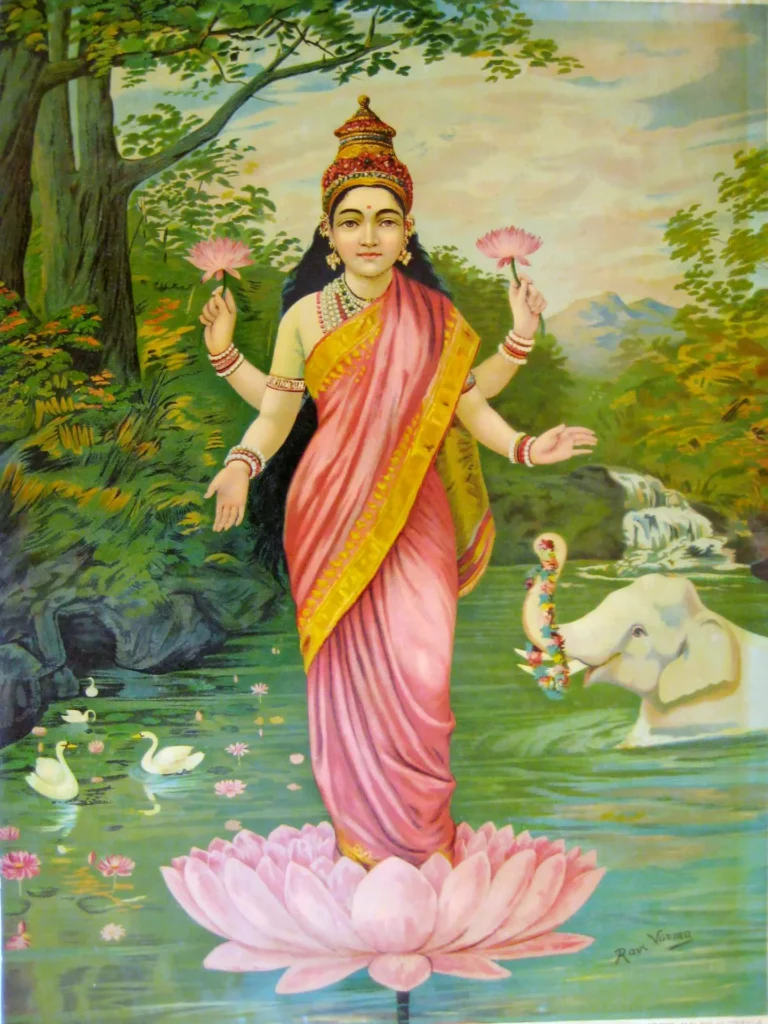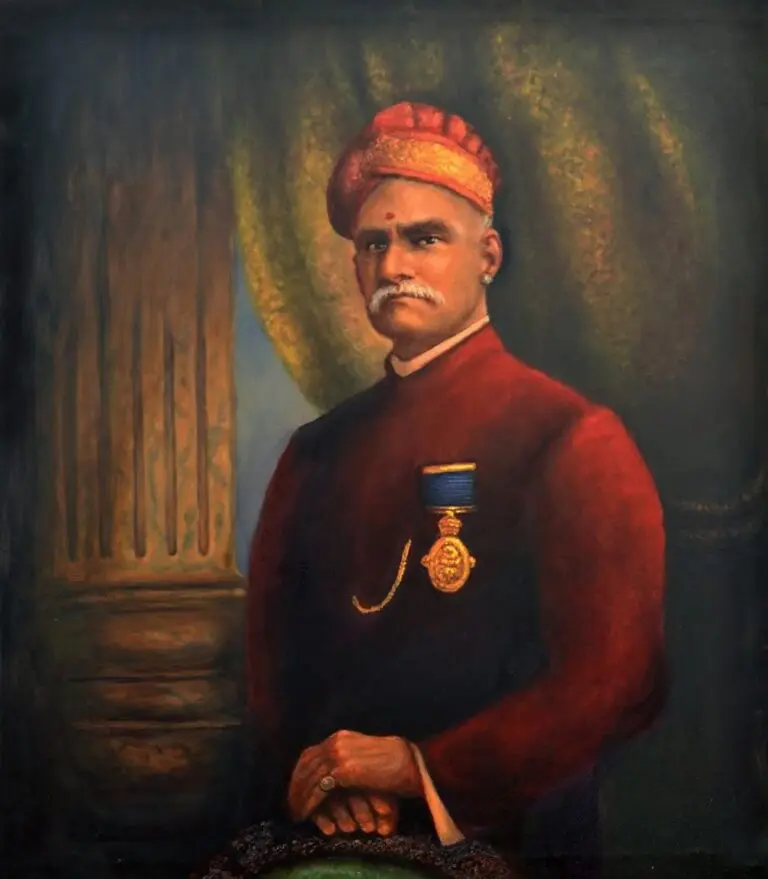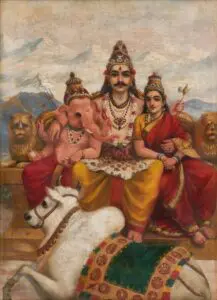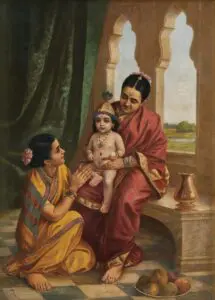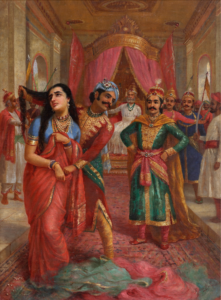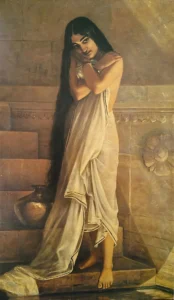Lakshmi, Goddess of Wealth
Lakshmi, Goddess of Wealth is a radiant portrayal of the Hindu goddess Lakshmi, the deity of prosperity, fortune, and beauty. Ravi Varma paints her standing gracefully and holding lotus flowers, symbolizing purity. The detailed depiction of Lakshmi, with her calm demeanor and intricate jewelry, is both divine and inviting, symbolizing an eternal source of blessings. This painting has become a cultural icon, defining how millions envision the goddess even today.
Late 19th Century
About the Artwork
Raja Ravi Varma's Contribution
Raja Ravi Varma (1848-1906) is recognized as the father of modern Indian art. He was pivotal in making Hindu deities accessible to the masses through his innovative use of oleography (a color printing technique) and lithography. Varma established the Ravi Varma Press in Mumbai, which produced affordable prints of his works, allowing a wider audience to appreciate his art. His portrayal of Lakshmi not only popularized her image but also set a standard for how deities were represented in Indian art.Notable Features of the Painting
This painting depicts Goddess Lakshmi, the Hindu goddess of wealth, prosperity, and fortune, in a serene and idyllic setting. She is portrayed standing gracefully on a large, fully bloomed lotus flower, which symbolizes purity and divine beauty. She has four arms: two are raised in gestures that symbolize granting boons (varada) and protection (abhaya), while the others hold lotuses
The goddess is adorned with intricate traditional jewelry and dressed in a vibrant pink sari with golden borders, showcasing Ravi Varma’s keen attention to detail and mastery of drapery. Her calm expression radiates divinity, benevolence, and maternal grace.
Did You Know
Liked what you see? Add it to your collection.
Enjoyed reading? Share it.
... continued
The background is rich with symbolic elements:
• Elephant offering a garland: In the background, a white elephant (Airavata, a symbol of royalty and strength) is depicted offering a floral garland to the goddess. This act symbolizes devotion and the divine acknowledgment of Lakshmi’s blessings.
• Swans in a serene water body: The swans, seen swimming gracefully, represent purity, spiritual insight, and detachment.
• Lush greenery and a cascading waterfall: The natural elements in the scene emphasize fertility, abundance, and the interconnectedness of prosperity with nature.




